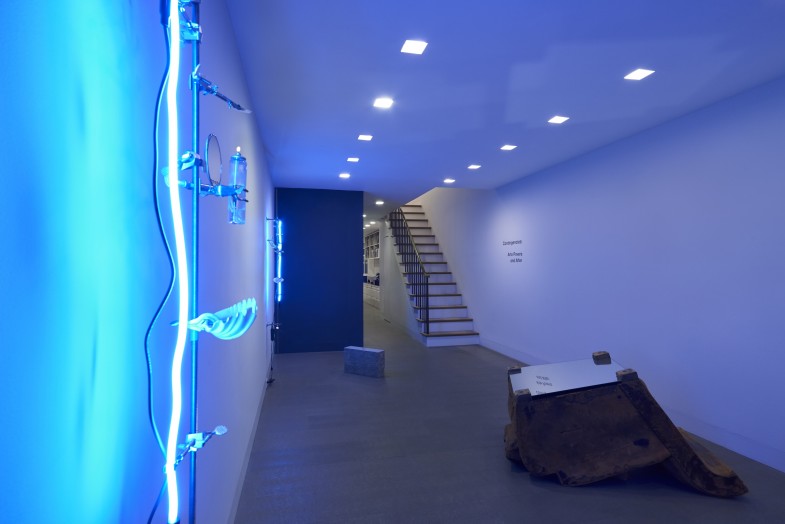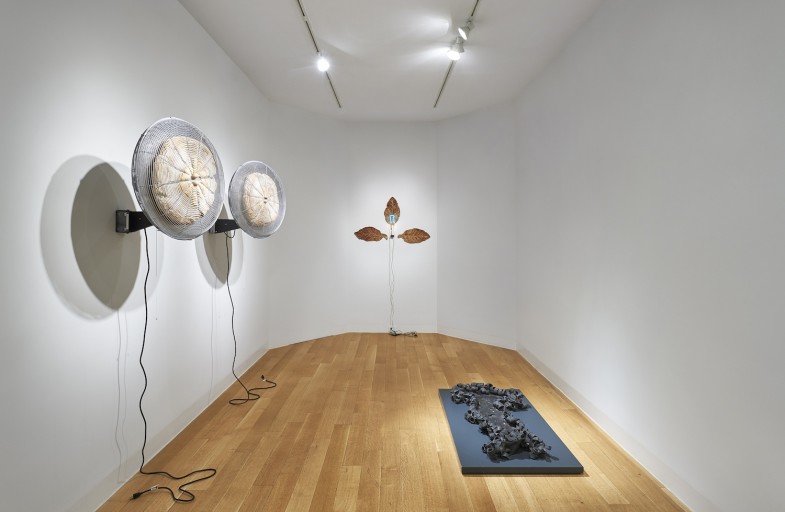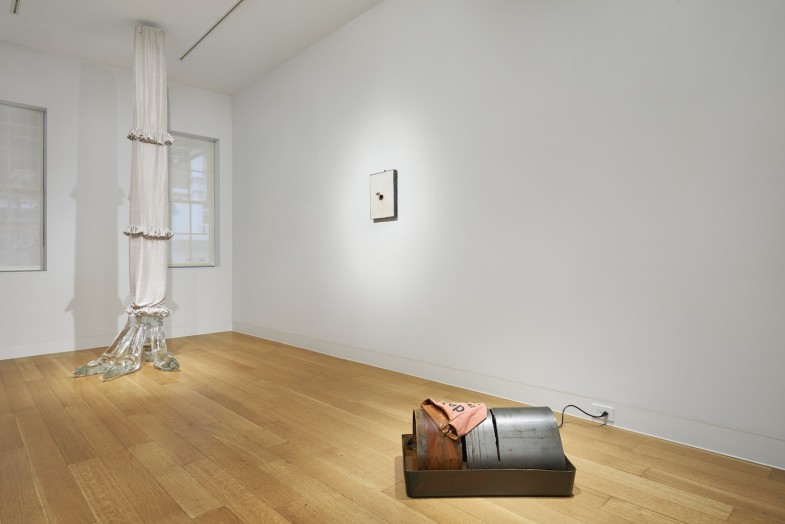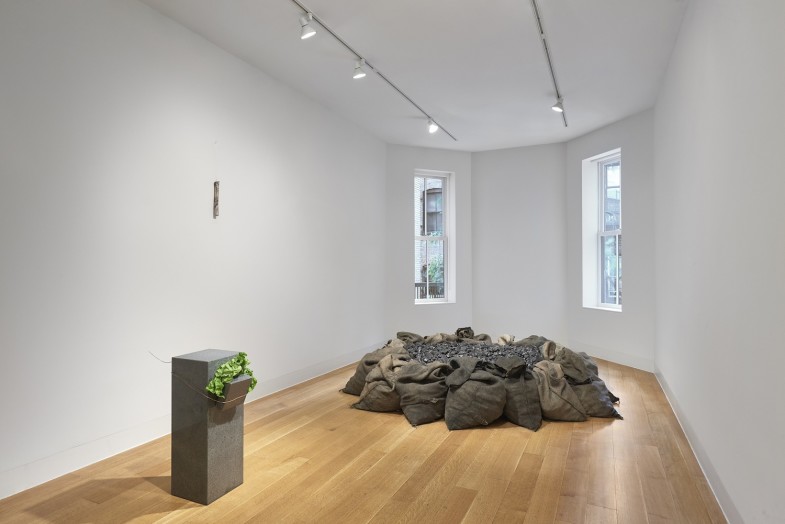New York… Beginning October 23, 2017, Luxembourg & Dayan will celebrate the semi-centennial of the Arte Povera movement with Contingencies: Arte Povera and After, an exhibition placing select works by contemporary artists in dialogue with significant Arte Povera works from the 1960s and 1970s, crossing these historical moments in order to better understand the echoes between them. Amid the sociopolitical upheavals of the day, Arte Povera artists questioned the established languages of government, industry, and culture by proclaiming the porosity of the artwork, and exalting in its contingency: suddenly, a potential chemical reaction or simple transfer of energy could comprise the work itself. Contingencies considers the ways in which artists today similarly react to a world in turmoil by rejecting the autonomy of the art object in order to harness, engage, or interrupt systemic flows-whether those are organic, social, or technological-on a distinctly material level.
On view through December 16th, the exhibition is the latest in Luxembourg & Dayan's ongoing, critically acclaimed program devoted to the relationship between postwar Italian art and contemporary culture. The exhibition features historical works by Giovanni Anselmo, Pier Paolo Calzolari, Luciano Fabro, Jannis Kounellis, Pino Pascali, and Michelangelo Pistoletto. These are placed in conversation with contemporary works by Olga Balema, Elaine Cameron-Weir, Nina Canell, Jason Loebs, and Carlos Reyes. The exhibition will be accompanied by an illustrated catalogue featuring essays by art historian Alex Bacon and Josephine Graf.
It was 1967 when the term "arte povera" was first used to designate a new tendency among a generation of Italian artists, many based in Turin. Far from a unified group, these artists nevertheless held in common an understanding of the work of art as radically contingent-married to shifts in material and context. They shared a preference for precarious and provisional materials, an attention to alchemy and craft, and a suspicion of technology paired with the desire to reveal the base materiality of deceptively frictionless transmissions of energy, information, and language. As the critic Germano Celant wrote in Arte Povera: Notes for a Guerilla War (his manifesto of sorts): "Over there a complex art, over here a poor art, committed to contingency, to events, to the non-historical, to the present..." Yet, as much as these works functioned in the present tense-often literally mutating in real time-they also rejected the fetish of the "contemporary," with its technological and productivist tendencies. Rather, many Arte Povera artists displayed an almost atavistic interest in the cosmic and mythological, and the fraught point at which nature and culture elide. In their works the artificial and the authentic, the industrial and the organic, comingle. They remind us that plastic might be the most alchemical material of all, and, to quote Giovanni Anselmo, electricity is "part of nature" too.
From our present vantage point, precisely fifty years later, several key tendencies of Arte Povera remain strikingly relevant. This is especially so among a generation of young artists, largely based in New York City, who, like the original practitioners of Arte Povera, exist in a climate of sociopolitical turmoil rife with pressure towards polish and productivity.
If Arte Povera emerged as a critique of modernity's push for postwar globalization (and its aesthetic expression in American Pop), the work of these contemporary artists similarly bristles against the smooth, seemingly immaterial dissemination of capital, information, and images within our present global order. This is an embodied and thus occasionally messy critique that is launched, like that of the original Arte Povera artists, on a material register. As with Arte Povera, these works enact tensions between continuity and disjuncture, between interconnectivity on the one hand and the inevitability of energy lost and connections missed on the other. And though the materials employed are not always "poor," they are certainly self-effacing-often breaking down, or verging on something else.
Celant noted of the Arte Povera artists a tendency not to "satisfy" systems but rather "dissect" them. The contemporary artists included in Contingencies extend this effort, tapping into systems as a means of materializing, rerouting, or pausing their flow. Yet, they channel fifty years of added history to this endeavor, with new technological, sociopolitical, and aesthetic developments to respond to. They likewise bring awareness of the fact that there may be no outside to whichever system they find themselves within, causing us to ask what new meaning "povera," with its original promise of resistance, might hold today.







